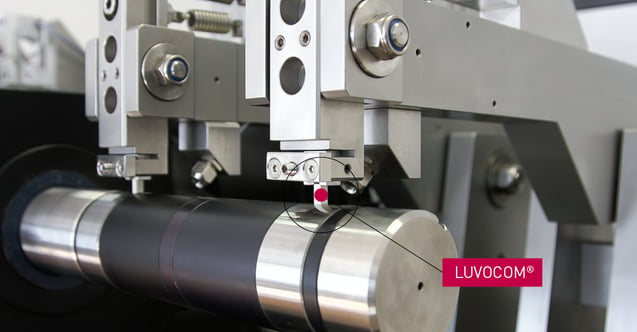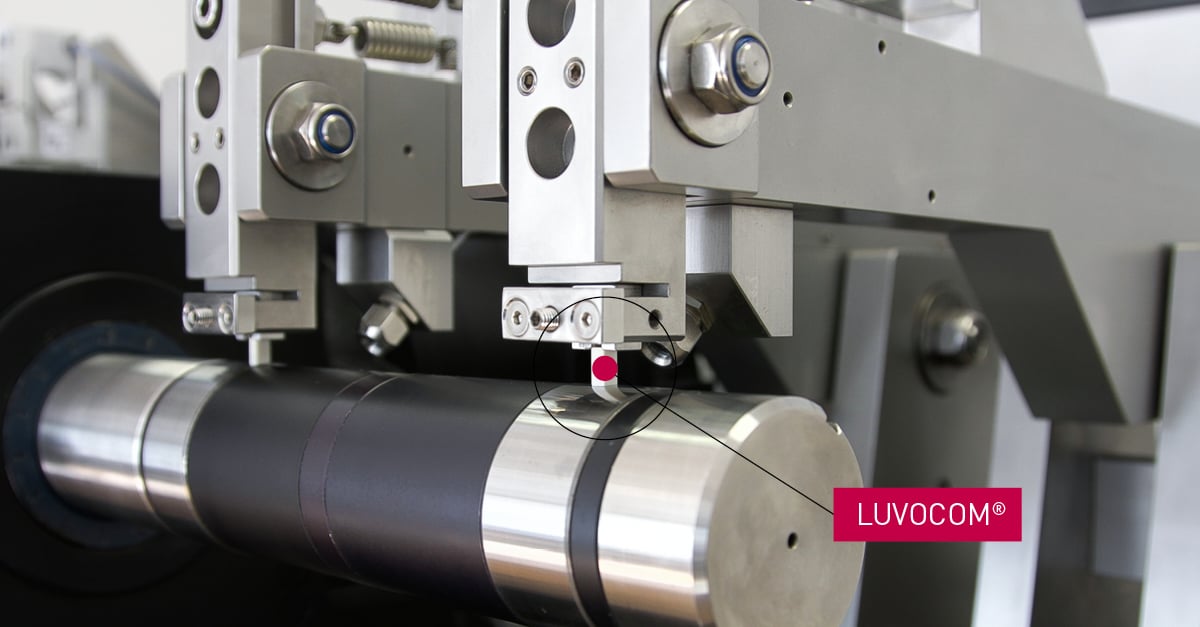Tribological test methods. Support for material selection and application optimization.

The results of tribological tests help to optimize material selection, improve product quality and service life, reduce costs and develop clear competitive advantages. The practical data obtained enables design engineers to make informed decisions and offer their customers high-performance, reliable products. This blog article deals with the tribological testing methods used, why big data means a lot but not everything, the advantages for plastics processing companies and, above all, the role of the material developer or compounder:
The most important tribological test methods at a glance:
Often the wear phenomena - such as abrasion, adhesion, fatigue or even oxidation - that occur during tribological testing are so small that they are not visible to the naked eye. Measurement data and results are then the parameters for evaluating the tribological properties of the materials. The following test methods or tribometers, among others, are used to obtain this data:
- The block-on-ring tribometer: The tribological test method using the "block-on-ring tribometer" is used to investigate friction and wear between two surfaces. In this process - under predefined contact conditions - a block material is rubbed against a ring made of another material. For example, metals, polymers, ceramics or even composite materials are used.
The characteristic features are:- Coefficient of friction,
- Wear rate,
- Lubrication behavior and
- Temperature rise.
The block-on-ring tribometer also allows various influencing factors - such as temperature, humidity, load conditions and surface roughness - to be taken into account in the tribological behavior. In addition, the tests can also be carried out in certain "media" - such as water.
- The SRV tribometer: The "Vibration Friction Wear Tribometer" consists of a platform (on which the material to be tested is clamped) and an oscillation unit (usually with a steel ball). The test specimens are usually positioned parallel to each other and examined under specific load parameters - force, pressure and speed. Coefficients of friction, wear rates and vibration amplitudes and frequencies are recorded.
- The Ball Prism Tribometer: The ball-prism tribometer works by creating a ball-prism contact in which the ball - controlled by a drive - rotates on the prism. In the process, the prism exerts a counterforce on the rotating ball.
- The pin-on-disk tribometer: Here, a pin is pressed against a rotating disk, creating a defined contact between the two surfaces. Different loading conditions are simulated by changing the contact force and different friction conditions are simulated by changing the rotation speed.
- The pin-on-plate tribometer: This involves sliding a pin across a fixed plate in a specific, controlled manner. The movement is performed either in a straight line or circularly.
- The thrust washer tribometer: In this test method, a thrust washer is placed opposite a rotating surface and subjected to axial load. This method specifically simulates the loading conditions in the thrust bearing.
A plastic material developer who knows and offers all test methods has the advantage of obtaining comprehensive, reliable data to better assess and, above all, optimize the performance and reliability of plastic materials or compounds in various applications.
Tribological testing methods and Big Data are good. Precise data interpretation is better.
Above all, the experience of the material developer helps to carry out the tribological tests efficiently and effectively, to interpret results optimally and to place them in the relevant context. By combining specialist knowledge and practical experience, his expertise makes a significant contribution to the development of high-quality compounds with optimized tribological properties. Data interpretation in particular is of crucial importance here. It requires a deep understanding of tribological mechanisms and interrelationships. This is the only way to draw meaningful conclusions.
Also an advantage for plastics processing companies: The experience of the material developer in terms of testing methods.
Other aspects - on which the experience of the material developer in particular has a major impact - include:
- Test method selection: An experienced material developer can select the most appropriate tribological test method for specific applications and objectives. Choosing the right method is critical to achieving meaningful and relevant results.
- The design of the test conditions: Experience helps determine the optimal test conditions in terms of loads, speeds, temperatures, and environmental conditions. This enables realistic simulations of actual application conditions.
- Specimen preparation: The preparation of specimens for tribological testing requires a high degree of care and experience to ensure that the specimens are representative and well prepared.
- The avoidance of errors: Experienced material developers have already experienced a variety of challenges and possible sources of errors in tribological testing methods. This enables them to avoid any errors and perform the tests more efficiently.
- Dealing with problems: Especially when unexpected results occur or difficulties arise during testing, an experienced material developer can find creative and effective solutions to optimize test procedures and materials.
- Looking at things in context. Experience enables the material developer to place tribological results in the larger context of the application and the customer's requirement. This contributes significantly to the practical applicability and relevance of the results.
- Unleashing innovation potential: Experienced material developers can use their expertise to develop innovative approaches and explore new tribological solutions.
Conclusion: Tribological test methods and sensitive material development are like Ying and Jang.
The close interlocking/ synergetic interaction of testing methods and material development opens up numerous optimization potentials for a plastics processing company. These can be found in a wide variety of topics such as: a) optimization of materials and lubricants, b) improvement of product service life, c) cost reduction, d) quality assurance or even the creation of clear competitive advantages. The prerequisite for this is a material developer who combines material testing and material development as complementary elements under one roof. In short: a material developer like LEHVOSS.
Feel free to contact us to this topic:

